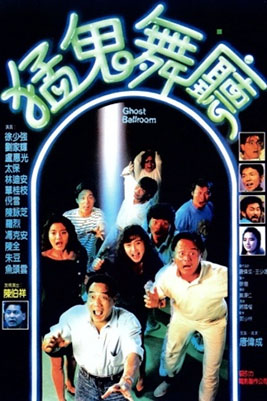

For years now, I’ve been defining a moviethon as a movie marathon of 5 films or more, preferably watching those five films in a single day. If you need to stretch the viewing over a 2-day period, then you should bump it up to 6 movies or more. Many of the moviethons I’ve written about over the years were between 13 and 18 films between Friday night and Sunday evening.
The main rule of a moviethon is that you have to sit through all of the films at normal speed. No cheating by having a movie playing at 10x speed or whatever abominable settings that modern technology has provided. Of course, you can pause for bathroom breaks and meals, and even leave yourself time to take a nap but I recommend setting an alarm (or two) just in case your body revolts and wants to crash for like 8 or 9 hours.
Obviously, you can do a moviethon any way that you see fit with any theme that you can imagine. But why not stage a Giallo Meltdown and burn through all those wonderful Italian thrillers you’ve been hoarding? Or watch all of those The Fast and the Furious films in an epic, brain-melting weekend of vroom vroom stuff. You could even do a “The Worst of ‘82” marathon with titles like Jerry Lewis’s nightmarish Slapstick of Another Kind (1982) and the paranormal high school sleaze fest Zapped! (1982) with a pre-“Charles in Charge” Scott Baio and Willie Aames. Does that sound too random? Good! The tenuous connections between your title choices is purely up to you.
Don’t have any ideas for your own moviethon? I got you covered. Want me to challenge you with a customized moviethon of my own making? Ditto. So yeah, I thought it might be fun to develop a playlist for a proper 10 film Doomed Moviethon-style moviethon based on the criteria I came up with below. The theme I’m providing you with is that there is no theme other than a collection of various horror, cult, and genre films.

The Very Official Doom It Yourself Moviethon Criteria:
1 giallo or 80 slasher – My two favorite genres!
1 Asian horror film – This is how your worldliness can be increased.
1 British horror film – Never underestimate how crazy British horror films can get.
1 zombie movie – There’s only a million of these to choose from.
1 non-horror film – This is your wild card and a chance to get truly freaky.
1 Spanish horror film – You need some Paul Naschy.
1 haunted house or ghost film – Save this one for after dark so you get spookefied.
1 Italian horror film – How can you choose just one?
1 action film – Some sweaty, machine gun-toting, macho bullshit.
1 vampire movie – Get sucked.
There are no rules in terms of the order or the scheduling with that criteria. Do two movies Friday night and then the other 8 all day on Saturday. Or save a couple for Sunday. Heck, if you were having trouble deciding between two many choices, don’t stop at 10 films. Go for 12 or 13 before you have to actually get some sleep and then go back to work. I do recommend putting the shorter films near the end of the marathon and/or saving your favorites or most anticipated titles for last.
Hopefully, I left you with some vague enough sub-genres so that you will be overwhelmed with choices. List making is fun! Speaking of being overwhelmed, here is my list as a curated challenge for you. Do you dare to get this doomed? The following playlist is what I am currently in the mood for right now. Every time I think about those criteria, I come up with different films, but I need to stop somewhere.

The Doomed Moviethon Challenge Playlist:
The Initiation (1984) – Dumb and overly serious slasher that is so much fun.
The Seventh Curse (1987) – You will never forget this Hong Kong splatterfest.
Terror (1978) – One of the weirdest British horror films ever.
One Dark Night (1982) – Very odd little zombie movie.
Spinout (1966) – This is like watching every Elvis Presley movie at the same time.
The Fury of the Wolfman (1973) – Paul Naschy hated making this dopey shit.
House on Haunted Hill (1999) – Something kooky from the tail end of the 1990s.
Aenigma (1987) – Fulci’s Carrie (1976) rip-off that is wacko.
Cyborg (1989) – Science fiction AND action in one movie. Van Damme it!
Vamp (1986) – This is about as offbeat as it gets.
So, there it is. Please let me know if you attempt this moviethon or a variant of it. I would be super jazzed to see how far you got or what titles you chose with my criteria. Before I wrap this up, don’t forget to watch these movies with some pals, either in the real world or in the virtual Internet space. Having someone along for the ride to react to your crazy picks makes staying awake much easier.









